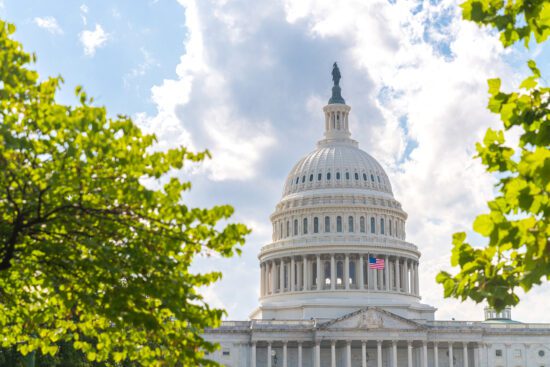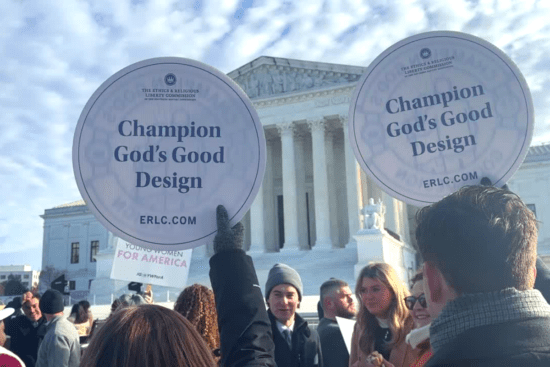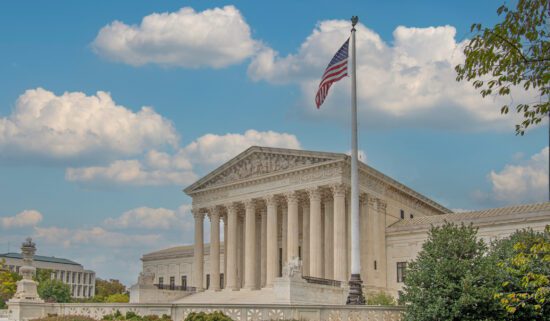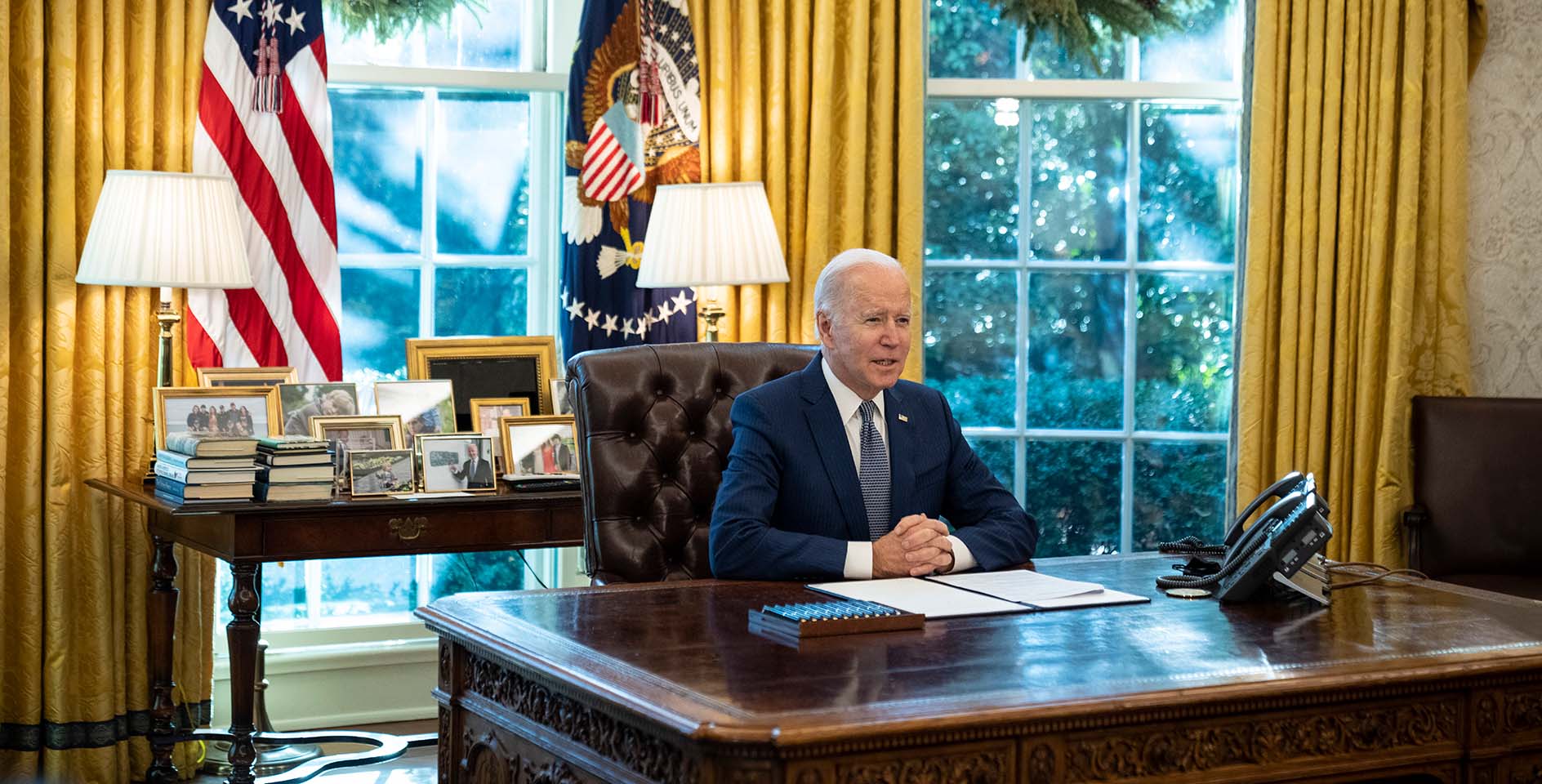The Biden administration released the “first-ever national gender strategy” in our nation’s history Oct. 22. According to the administration, it is intended to bring about greater gender equity and equality for all people, whether in the United States or abroad. This strategy is made up of 10 interconnected priorities and will be led by the newly formed White House Gender Policy Council (GPC). It is designed to develop a roadmap for the entire nation on gender issues.
The White House release explains that this strategy is desperately needed given the “overlapping” pandemics of COVID-19 as well as a “shadow pandemic” of gender-based violence in the U.S. and around the world. The strategy is described as a pathway toward overcoming the “longstanding gender discrimination and the systemic barriers to full participation that have held back women and girls.” This national plan is primarily based on an intersectional approach to identity and has far-reaching implications for much, if not all, of public and civic life.
One important and revealing aspect of this federal strategy is that gender equity and equality is framed as the natural next step in America’s pursuit of recognizing the inherent dignity of all people — in line with the Emancipation Proclamation, the passage of the 19th Amendment, the Voting Rights Act, the Civil Rights Act, reproductive rights, and even marriage equality. Portrayed in this historical lineage, the Biden Administration is intentionally arguing that gender equity and equality—namely LGBTQI+ issues—are on the same level of importance with the abhorrent practice of slavery and inhumane Jim Crow laws alongwith the historic unjust subjugation of women as of lesser value and position in our society than men.
Who developed this strategy?
In celebration of International Women’s Day, which occurs annually on March 8, President Biden signed an executive order establishing the Gender Policy Council under the executive branch and mandating the release of this national strategy. The White House states that this council works in collaboration with other White House policy councils — including the Domestic Policy Council, National Security Council, and National Economic Council — and across all federal agencies.
The council is co-chaired by Jennifer Klein, who also serves as the executive director, and Julissa Reynoso, who also serves as First Lady Dr. Jill Biden’s chief of staff. The council is also made up of various domestic and international gender policy experts, including a senior advisor on gender-based violence. This national strategy on gender equity and equality was among the first public aspects of the council’s work and was announced at a White House press conference last week.
What does the strategy contain?
The strategy is detailed in 42-page report that touches on a host of issues ranging from “abortion rights and immigration to the creation of a National Intelligence Officer for Gender Equality to analyze the relationship between gender and violent extremism.” Council Co-Chair Klein highlighted the historic nature of this first national gender strategy and whole-of-government approach both domestically and internationally in an interview with Foreign Affairs.
The report states that its goal is to provide a federal vision based on intersectionality to ensure equity for all communities including “Black, Latino, and Indigenous and Native American persons, Asian Americans, Native Hawaiians, and Pacific Islanders, and other persons of color; members of religious minorities; lesbian, gay, bisexual, transgender, queer, and intersex (LGBTQI+) persons; persons with disabilities; persons who live in rural areas; and persons otherwise adversely affected by persistent poverty or inequality.”
According to the White House release, the strategy highlights 10 “interconnected” priorities of the Biden/Harris administration including: 1) economic security; 2) gender-based violence; 3) health; 4) education; 5) justice and immigration; 6) human rights and equality under the law; 7) security and humanitarian relief; 8) climate change; 9) science and technology; and 10) democracy, participation, and leadership. The specifics of these priorities are wide-ranging and include an emphasis on overcoming gender discrimination in the workplace, eliminating gender-based violence, addressing sexual violence at home and abroad, promoting the safe and fair treatment of “all people in the justice and immigration systems,” and advocating for the “leadership of women and girls in addressing the challenge of climate change.”
The plan is described by the co-chairs as “aspirational,” not tied directly to any piece of legislation. It also is designed to encourage the private sector to join with the administration in promoting gender equity and equality throughout our society as well.
What is intersectionality?
Intersectionality is considered an analytic tool used to identify various power dynamics and relations through various overlapping identities among minority groups in society. As scholars Patricia Hill Collins and Sirma Bilge describe in their influential introduction to the subject, “Intersectionality investigates how intersecting power relations influence social relations across diverse societies as well as individual experiences in everyday life. As an analytic tool, intersectionality views categories of race, class, gender, sexuality, class, nation, ability, ethnicity, and age — among others — as interrelated and mutually shaping one another.”
This concept is often used to highlight the unique perspectives that each person has given their intersecting and overlapping identities. Intersectionality is also closely related to various critical theories as well, given how each frames our true identities in light of the pronounced power dynamics that exist in society, often defined around various economic realities.
GPC Co-Chair Klein explains that this strategy will employ an “intersectional approach that recognizes overlapping forms of discrimination on the basis of gender, race, ability, immigration status, sexual orientation, gender identity” as the core and guiding principle of the entire strategy.
The concept of intersectionality is routinely applied to many of the issues highlighted in this national strategy, which is concerning for people of faith, particularly Christians, who do not see our true identities as grounded in mere power dynamics or economic activities, but rather as people created in God’s image (Gen. 1:26-28) with infinite value, worth, and dignity. While Christians rightfully acknowledge our sin has both a personal and social component to it, some of these tools highlight the differences among people as paramount instead of what actually binds people together — that all human beings are created in the imago Dei.
Referencing the need for evangelicals to support biblically defined social justice, famed theologian and ethicist Carl F. H. Henry wrote in God, Revelation, and Authority that “Social justice is not simply an appendage to the evangelistic message; it is an intrinsic part of the whole, without which the preaching of the gospel is truncated. Theology devoid of social justice is a deforming weakness of much present-day evangelical witness.”
Christians understand that as believers we are given a new identity in Christ and that this new life in Christ doesn’t seek to be colorblind or overlook our differences, but rather reframes them as unique gifts from God to the world and the church for his glory.
How should Christians think about this strategy?
This strategy is not only ambitious, but can be seen as a way for the federal government to expand its authority and influence over everyday life given the sheer breadth of issues included. While this plan may contain some elements that could gain bi-partisan support, these issues are completely overshadowed by the intersectional approach to issues and the unwavering support for a constitutional right to abortion nationwide. While the strategy does not have any immediate authority and Congress would have to authorize many of the priorities listed as part of the normal legislative process, the framing of these issues reveals the deep-seated tensions in our society over public expressions of faith and some of crucial issues in the public square today.
Notably, the strategy rarely mentions the plight of religious minorities around the world, among them many women and girls, nor does it enumerate religious freedom among the many human rights it claims, especially in the midst of the ongoing religious genocide among the Uyghur people in the Xinjaing province in China. This is striking given the persistent practice of authoritarian regimes around the world that strip their people of all basic rights, including religious freedom and free expression. Religious freedom is of paramount importance domestically and around the world because it is a basic human right and good for a flourishing society.
Of particular interest, many of these interconnected priorities align with the administration’s goal to solidify a right to abortion under, ironically, the auspices of healthcare. The strategy states that this administration is fully committed to promoting “access to sexual and reproductive health and rights both at home and abroad.” This commitment is a part of the whole-of-government approach that President Biden declared in light of the recent Texas Heartbeat Act, also known as Texas SB 8, that “bans abortion once a fetal heartbeat is detected, which typically occurs anywhere between five and eight weeks into a pregnancy.” The strategy also calls for a concerted effort to uphold the practice of abortion in light of how the Supreme Court is preparing “to hear the greatest challenge to Roe in a generation, putting women’s fundamental rights on the line.” This particular reference is to Dobbs vs. Jackson Women’s Health Organization, which begins oral arguments at the Supreme Court Dec. 1.
It also remains to be seen what this National Strategy and/or the GPC may seek to do to promote greater online regulations or digital content moderation for hate speech and violence online, especially given the emphasis of many social media platforms on expansive definitions of what constitutes hate speech. These hate speech definitions now include conflating the misgendering or deadnaming of individuals—meaning using the name prior to one’s gender transition—with actual threat of physical violence and hate crimes. In recent years, ideas — particularly those rooted in biological realities and historic Christian teaching — have been deemed as inherently bigoted and harmful. But, as Brookings scholar Jonathan Rauch eloquently states in his recent work, The Constitution of Knowledge, “words are not bullets . . . stopping words does not stop bullets, and . . . confusing words with bullets is a tragic error” (203). Hate crimes and violence cannot be equated with words online, especially words speaking to the realities of how God made both men and women in his image.
The ERLC will be closely watching the developments, including any potential recommendations or future legislation, surrounding the National Strategy on Gender Equity and Equality. We are committed to providing further resources from a biblical worldview on the concerning aspects of the federal government’s approach to gender and various social issues.










